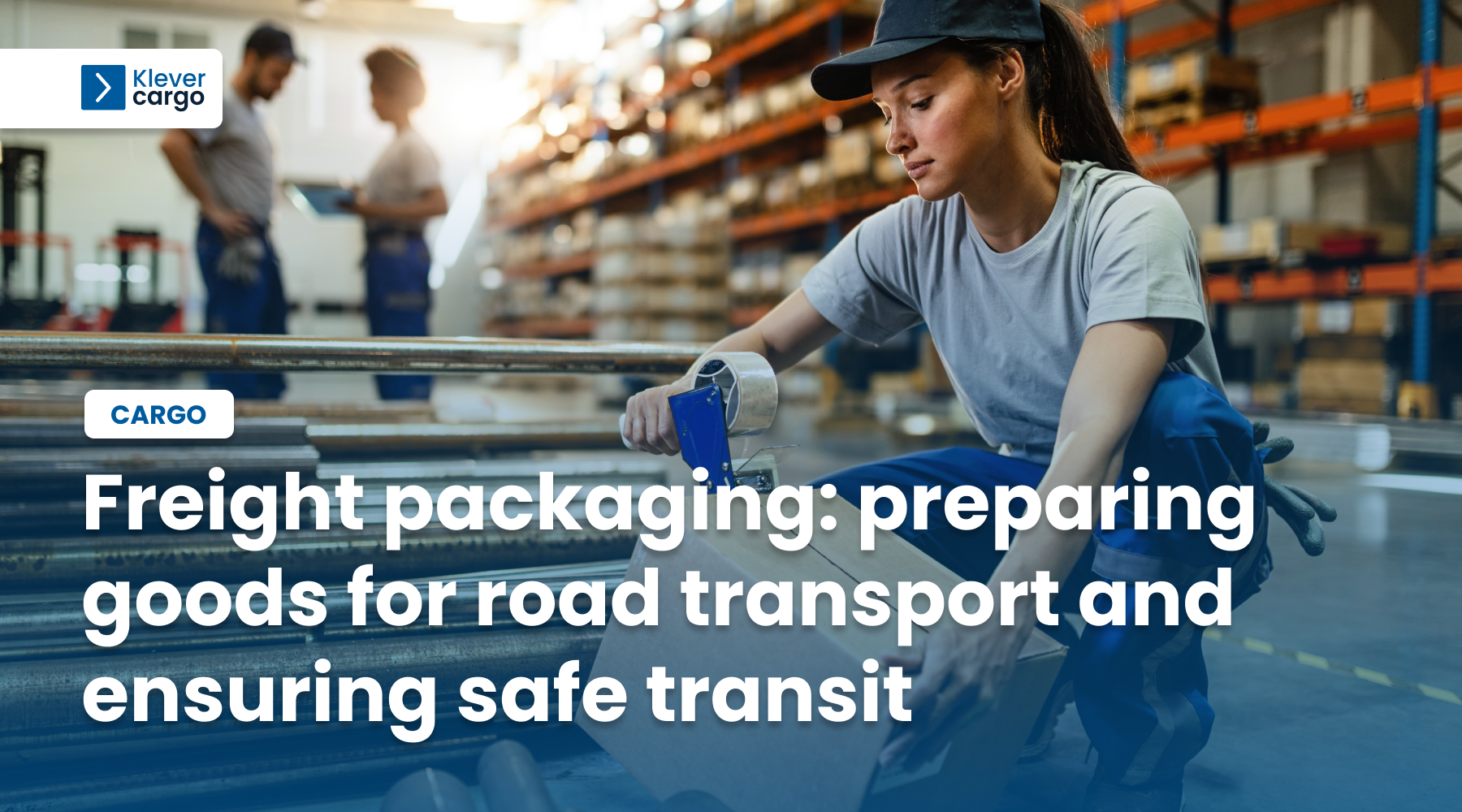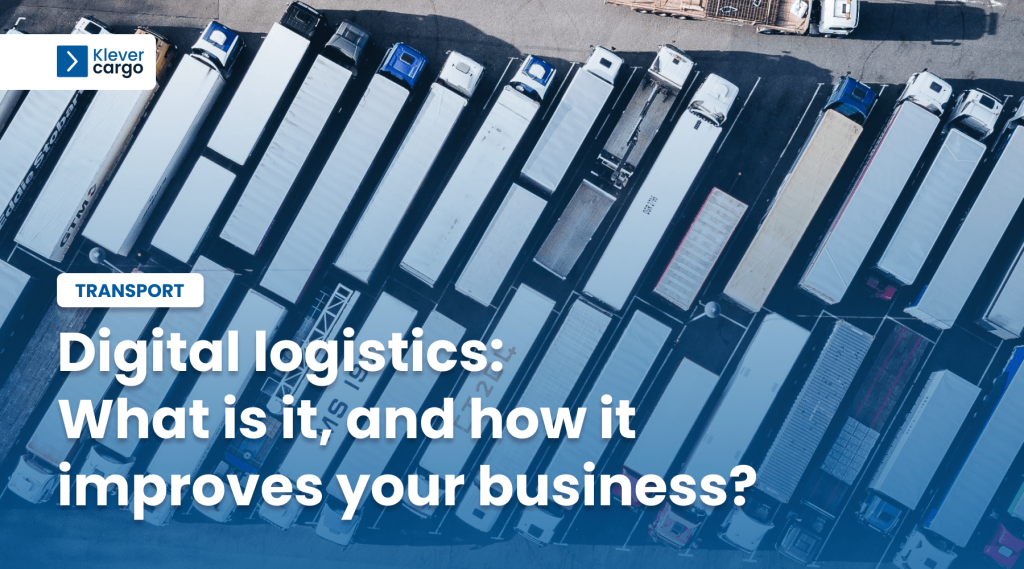While many people may think of packaging simply as a means of containing goods during transportation, its importance extends far beyond that. In fact, proper freight packaging is absolutely essential for ensuring that goods remain safe and protected throughout their entire journey in the supply chain. It minimises the chances of damaging freight during:
- handling;
- loading;
- unloading;
- storing;
- any bumps along the road.
Whatever type of goods you intend to ship, effective packaging ensures their safe arrival. As such, it’s crucial to understand which types of packaging to use and how to ensure the safety of anyone involved in the process.
Why is freight packaging important?
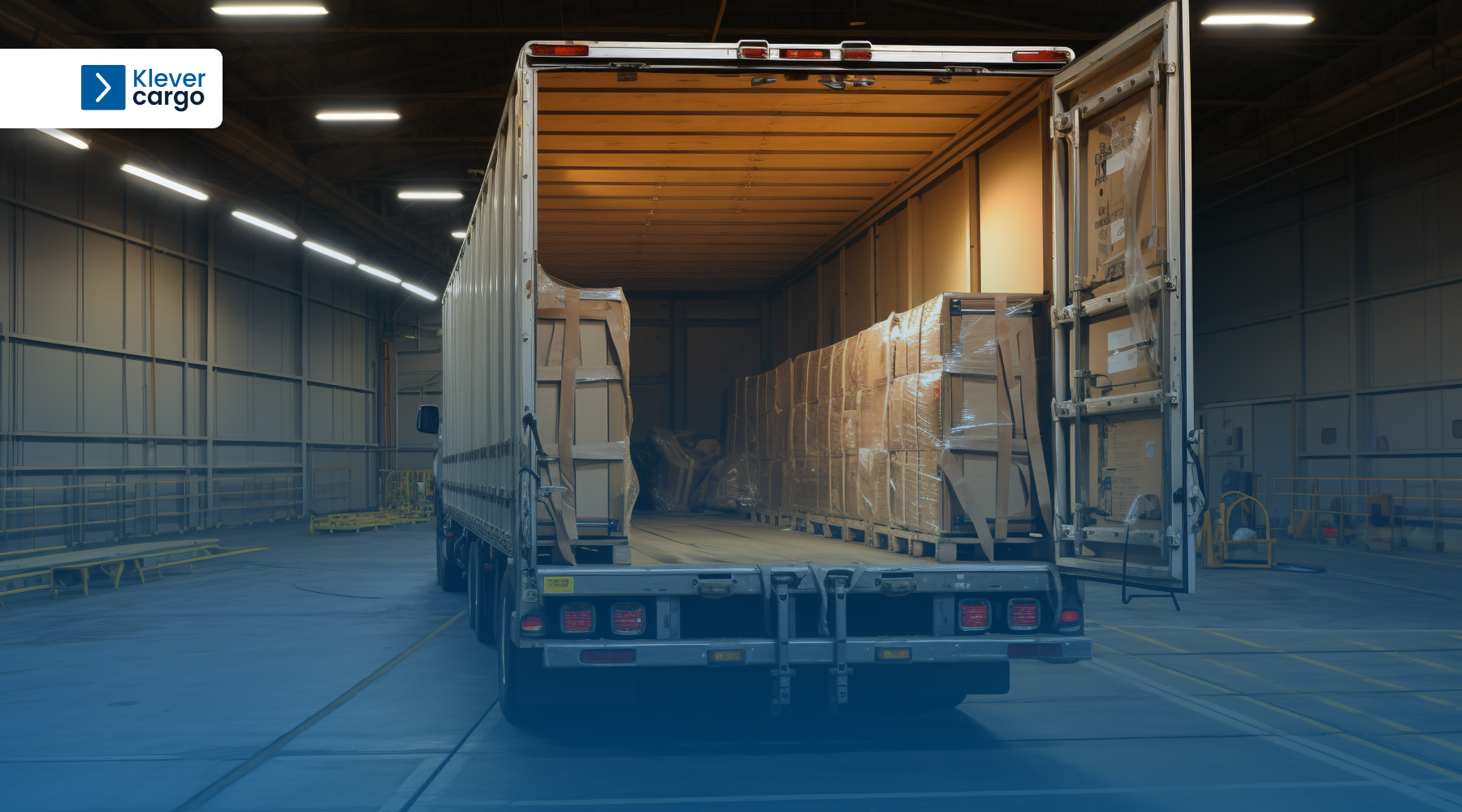
1. Goods safety
To ensure the safe and secure transportation of goods on the road, freight packaging is essential. It acts as a protective shield against transportation challenges such as different terrains, sudden stops, and rough weather conditions, safeguarding the cargo.
Packaging is a lot more than just enclosing goods. The road can be unpredictable, with poorly paved surfaces and unexpected stops or collisions. However, well-designed packaging can protect against physical damage during transportation, absorbing impact and preserving the integrity of the goods.
Various goods are vulnerable to contamination during transport, particularly electronics and perishable items. However, with suitable packaging, these goods can be protected from exposure to harmful dust and moisture. Adequate packaging ensures that goods arrive at their destination unscathed by creating a barrier.
2. Preventing damage
Potential shifting is another crucial part that determines the safety of goods in transport. Without proper packaging, the freight might move within the truck. That movement can damage the goods and disrupt the balance of the entire load. But with appropriate packaging, the products will be secured in place.
3. Preventing theft
Finally, proper freight packaging will make the load safer from theft. Well-packaged goods are less likely to attract unwanted attention. Packaged goods hide the contents of the freight, ensuring that it arrives intact.
Choosing the right material for freight packaging
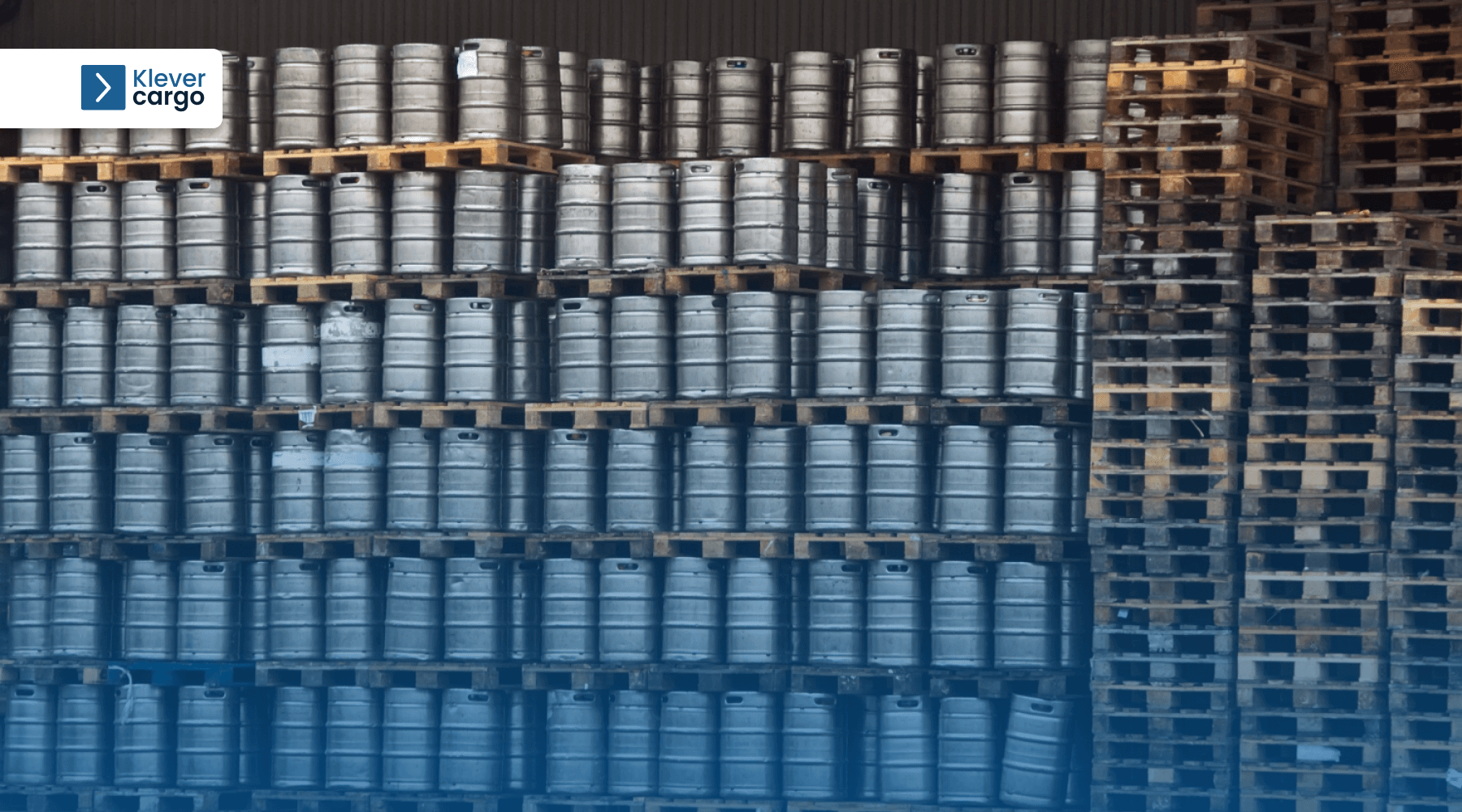
Choosing suitable material for freight packaging is critical for the freight’s protection. The material you choose will directly impact the safety and security of the goods.
Each material has its unique properties and handling conditions during shipping. Choosing suitable materials will minimise the risk of damage. It also ensures your goods arrive at their destination in optimal condition.
Commonly used packaging materials
1. Cardboard and corrugated board
Cardboard is a versatile and cost-effective option for various goods. A corrugated board is another excellent option since it has a layered structure. That enables enhanced cushioning and resistance to impact. These are most commonly used for:
- consumer goods;
- electronics;
- lightweight items.
2. Plastic
Plastic packaging materials (like polyethylene and polypropylene) provide durability and moisture resistance. They are perfect for products that require protection against humidity or water exposure. Plastic is frequently used for packaging:
- food;
- beverages;
- cosmetics.
3. Wood
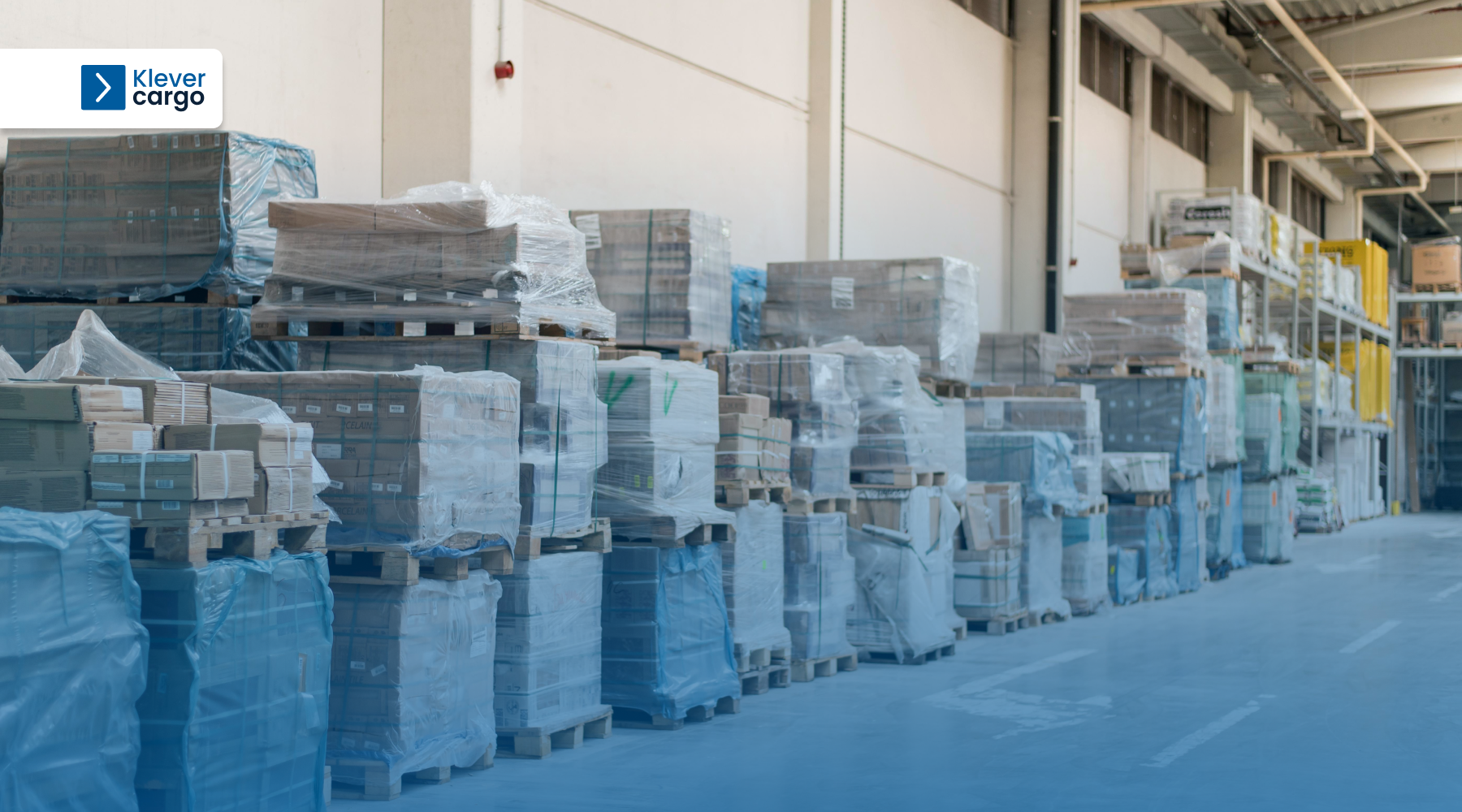
Wooden packaging is valued for its sturdiness and customisable sizing. The most common formats of wooden packaging are crates and pallets. It’s particularly useful for heavy or oversized items. That includes goods like:
- machinery;
- construction materials;
- industrial equipment.
4. Foam and cushioning materials
Foam and bubble wrap offers exceptional shock absorption. They also prevent movement within the packaging. These materials are vital for delicate and fragile items. Some of those are:
- glassware;
- ceramics;
- Electronics.
5. Metal
Metal packaging is the way to go for goods needing top-notch protection. Opting for metal containers and cases is especially ideal for delicate or high-value items. It’s commonly used for transporting:
- valuable items;
- precision instruments;
- sensitive electronics.
Factors to consider when choosing packaging material
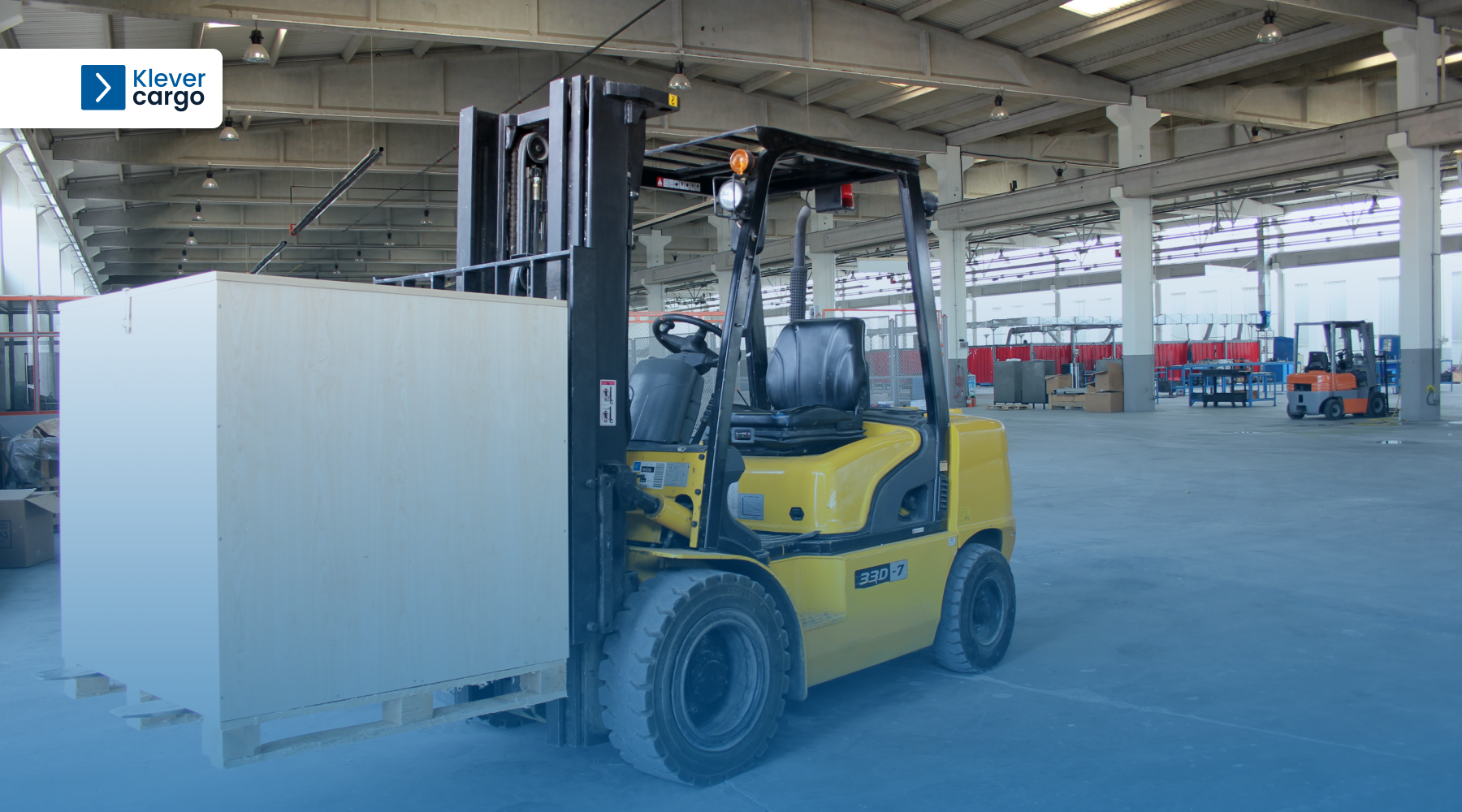
1. Nature of goods
The first factor you should consider in transporting the goods safely is their nature. Are they fragile? What is their shape and weight? Fragile items require packaging materials that provide cushioning. On the other hand, heavy items demand strong and sturdy packaging.
2. Transport conditions
Different materials will behave a certain way under different conditions. That’s why it’s crucial to consider environmental conditions when preparing goods for road transportation. The temperature can be an essential factor in preserving the freight. Humidity is another thing to consider. Certain goods (electronics, for example) can’t withstand those conditions. Exposure to sunlight is another factor to keep in mind. Some materials are better suited to withstand these challenges. Others need more robust protection to preserve these conditions.
3. Handling and storage
The freight process sometimes requires robust handling of the goods. They first need to be loaded onto trucks. They’ll be unloaded when they reach their destination. The freight may also be stored before transportation. You must think about these processes and if the freight can withstand them. Naturally, the goal is to allow these processes without damaging the goods.
4. Distance and duration
The length of the journey and the time in transit will drastically influence the required level of protection. Although some goods may require less robust packaging, the length of the trip can affect that. If the transit time is extended, consider packaging materials with higher durability.
5. Regulations and compliance
Some goods have specific packaging requirements due to regulations and safety standards. Ensure your chosen materials meet these guidelines to avoid issues during transportation.
6. Cost-effectiveness
Although safety must be your priority, cost-effectiveness is another important factor. Try to balance the cost of the materials with the value of your freight. Hence, opt for adequate protection materials while aligning with your budget.
Freight packaging methods
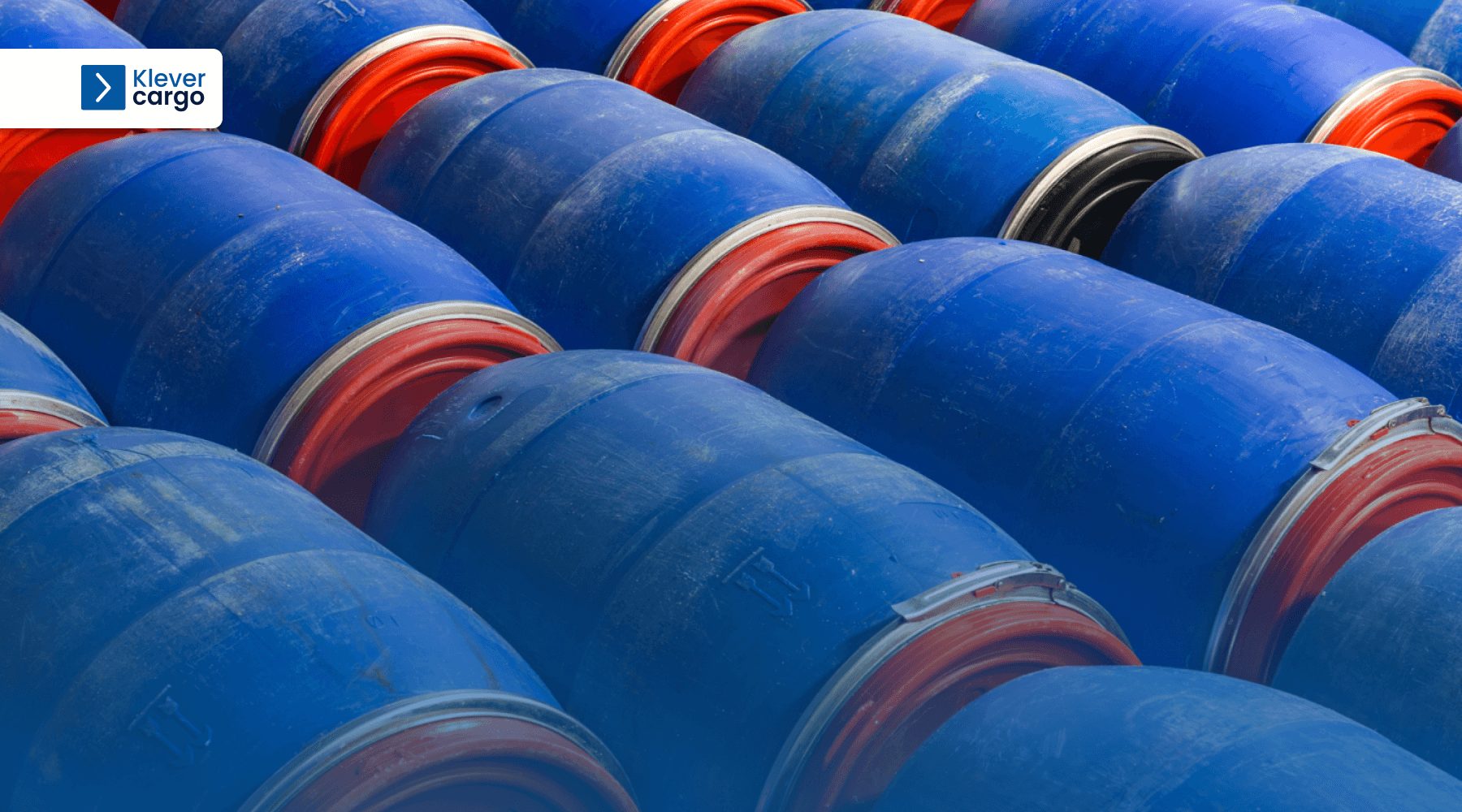
1. Bulk
Bulk packaging involves loading goods directly into a transport vehicle without individual wrapping. This method works best with large amounts of uniform goods. It’s ideal for commodities like grains and construction materials that don’t require individual protection.
Suitable goods:
- agriculture (grains, seeds, animal feed);
- construction (sand, gravel, cement);
- mining (ores, minerals).
2. Liquid
Liquid packaging involves sealing liquids in specialised containers or tanks. The goal is to prevent spills during transport. Liquid packaging is essential for transporting liquids prone to leakage.
Suitable goods:
- chemical industry (chemicals, solvents);
- food and beverage (beverages, syrups, oils);
- pharmaceutical (liquid medications).
3. Box/Coli Packaging
Box or coli packaging uses boxes or parcels to seal individual items. It’s a great way to protect smaller items. That makes it a very popular packaging method for e-commerce and retail.
Suitable goods:
- e-commerce (electronics, accessories);
- retail (clothing, cosmetics, toys).
4. Pallet
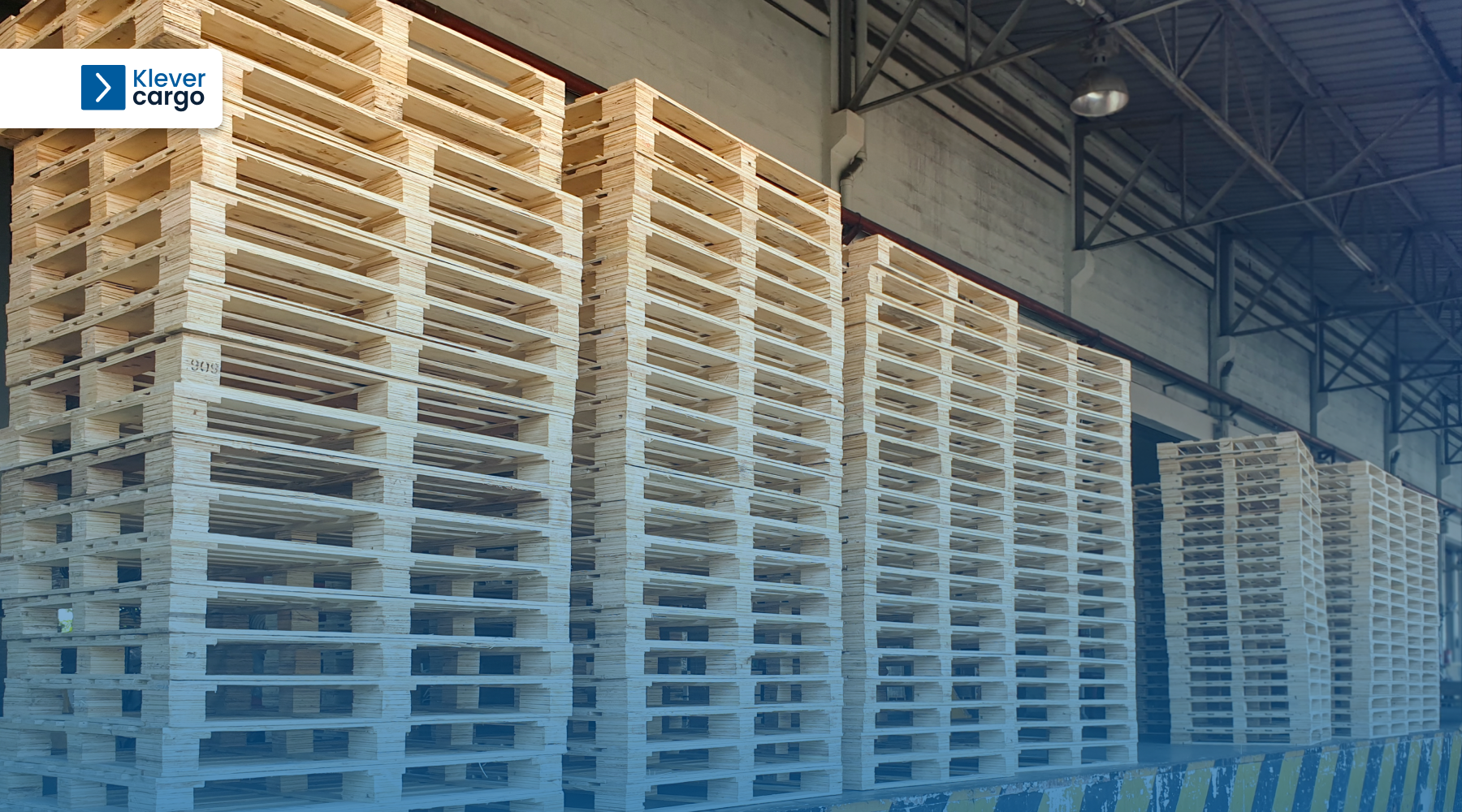
Pallet packaging is a method of loading goods onto pallets. This method ensures stability and easy handling of the cargo. It’s an excellent way to transport heavy and bulky items.
Suitable goods:
- manufacturing (machinery parts, equipment);
- construction: (building materials);
- logistics: (bulk shipments, warehouse distribution).
5. Rolls
Rolls packaging is the solution for packaging goods that come in sheets or rolls. It helps them to maintain shape and prevent unravelling.
Suitable goods:
- textile industry (fabrics, clothing);
- paper industry (paper rolls, packaging materials);
- flooring industry (carpets, linoleum).
6. Container packaging
This method involves using large containers for enhanced protection. It’s suitable for various goods, especially for longer road journeys.
Suitable Goods:
- consumer goods (electronics, appliances);
- furniture (home furnishings, office items);
- industrial (machinery parts).
7. Oversized packaging
Oversized packaging refers to customised crates or containers for transporting large or irregularly shaped items. Its primary use is for items that don’t fit standard packaging methods.
Suitable goods:
- industrial equipment (machinery, parts).
- art and sculpture (large installations).
Find secure transport for every method of freight packaging
The process of finding secure transport for various methods of freight packaging has been simplified by the KleverCargo platform. It’s an online freight exchange platform that connects carriers and shippers directly, plus it supports all methods of freight packaging.
As we concluded, different freight requires different packaging methods. With KleverCargo, setting that up takes just a few clicks. Here is the step-by-step guide:
1. When you log into the platform, click the Create new button, followed by Transport request.
 2. From there, you’ll be able to input all the necessary information about your cargo. That includes vital information like:
2. From there, you’ll be able to input all the necessary information about your cargo. That includes vital information like:
- pickup date and time;
- pickup point;
- delivery date and time;
- delivery point;
- cargo name and type, etc.

3. But the most prominent feature is the packaging type:
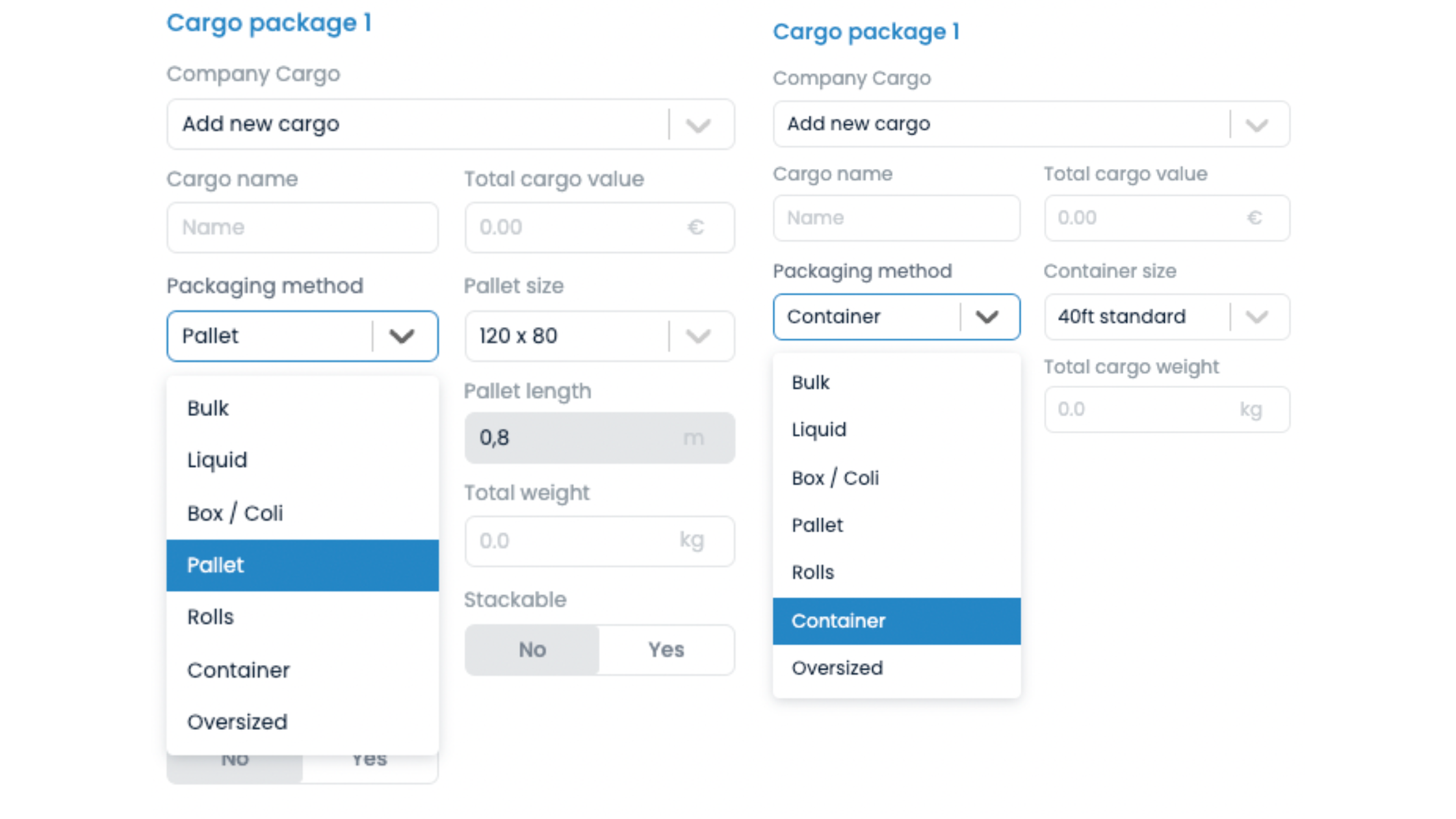
You can navigate the menu and select the exact packaging type for your cargo’s needs. Then, you can simply input the description in the designated box and add all the necessary info for your particular goods.
By utilising the KleverCargo platform, you’ll always be able to communicate your requirements to the carriers. With this approach, you’ll save time and have direct communication to avoid mishandling and damage to the products.
Securing and stabilising freight

There are multiple techniques that companies use to secure and stabilise their goods. The most common ones are the following:
-
Dunnage
Placing materials like wood or foam between cargo and truck walls prevents shifting and collisions. This helps maintain the integrity of the cargo during transit.
-
Void fillers
Using foam blocks or cushioning bags fills empty spaces. That minimises cargo movement and impact between items. This prevents items from potentially getting damaged.
-
Bracing and blocking
Securing cargo with diagonal braces or blocks reduces side-to-side movement. That adds an extra layer of protection. It ensures that items remain stable even during turns or sudden stops.
-
Strapping
Using strong bands and ropes to secure cargo evenly distributes tension. That prevents items from falling over. This method keeps items securely in place throughout transportation.
-
Overhead securement
Installing straps prevents items from lifting during movement. This prevents goods from causing potential hazards.
-
Balancing and weight distribution
Positioning heavier items at the bottom and distributing weight evenly reduces tipping risk and enhances overall truck stability. Maintaining the truck’s balance through proper weight distribution is crucial to reduce the likelihood of accidents.
Proper labelling

This is an inevitable part of a safe and efficient transportation process. Accurate labelling provides vital information about the freight, which makes handling easier and reduces the risk of errors.
Labels will inform the handler about the contents and quantities they’re dealing with. That ensures that everyone in the transportation process knows the goods’ nature.
Safety is another significant factor that labelling contributes to. Dangerous goods must be labelled accurately to alert handlers to potential dangers. This allows them to take precautions and protects the freight and anyone involved.
Labels guide proper handling procedures, which reduces the likelihood of damage. Apart from dangerous goods, other goods need to be treated carefully, including:
- fragile items;
- temperature-sensitive items;
- perishable goods.
It’ll also make the entire process a lot more efficient. It’ll speed up the loading and unloading processes, saving time and minimising delays.
Finally, labelling is mandatory for certain items. There are legal regulations that companies must comply with to maintain transportation and safety standards.
Proper communication

Numerous stakeholders must collaborate in the process of freight. Proper communication is vital for the freight to reach its destination safely and on time.
Proper communication allows shippers to provide handling and transportation instructions. It also enables real-time updates on the location of the freight. That way, the shippers, drivers, and carriers have transparency that builds trust. It also allows them to make changes if anything unexpected happens.
Effective communication helps identify and solve issues quickly. If any problems happen, clear communication allows for a quick solution. That minimises delays or any disruptions in the supply chain.
Communication is also vital for any law regulations. That includes documents like permits or custom declarations.
There are various types of situations where communication is the key part of solving an issue. For example, transporting fragile goods can be challenging since they must be handled carefully. Without proper communication, these items may be mishandled and damaged in the process. Of course, that leads to financial losses for everyone involved.
Use a centralised platform for better communication
That could’ve easily been prevented by using a centralised platform like KleverCargo. With KleverCargo, shippers can include specific handling instructions for fragile items directly in the shipment contract. These instructions are available to carriers, drivers, and all other stakeholders.
Let’s say that the fragile item that must be transported is glassware. Through the KleverCargo platform, the shipper explicitly states the fragility of the freight. They can also provide instructions for careful handling and secure packaging. Then, the carriers and drivers can take the necessary precautions to safeguard the fragile cargo.
In this example, the KleverCargo platform acts as an enabler of effective communication. It eliminates the risk of mistakes caused by a lack of communication.
Properly packaged freight is half-done work
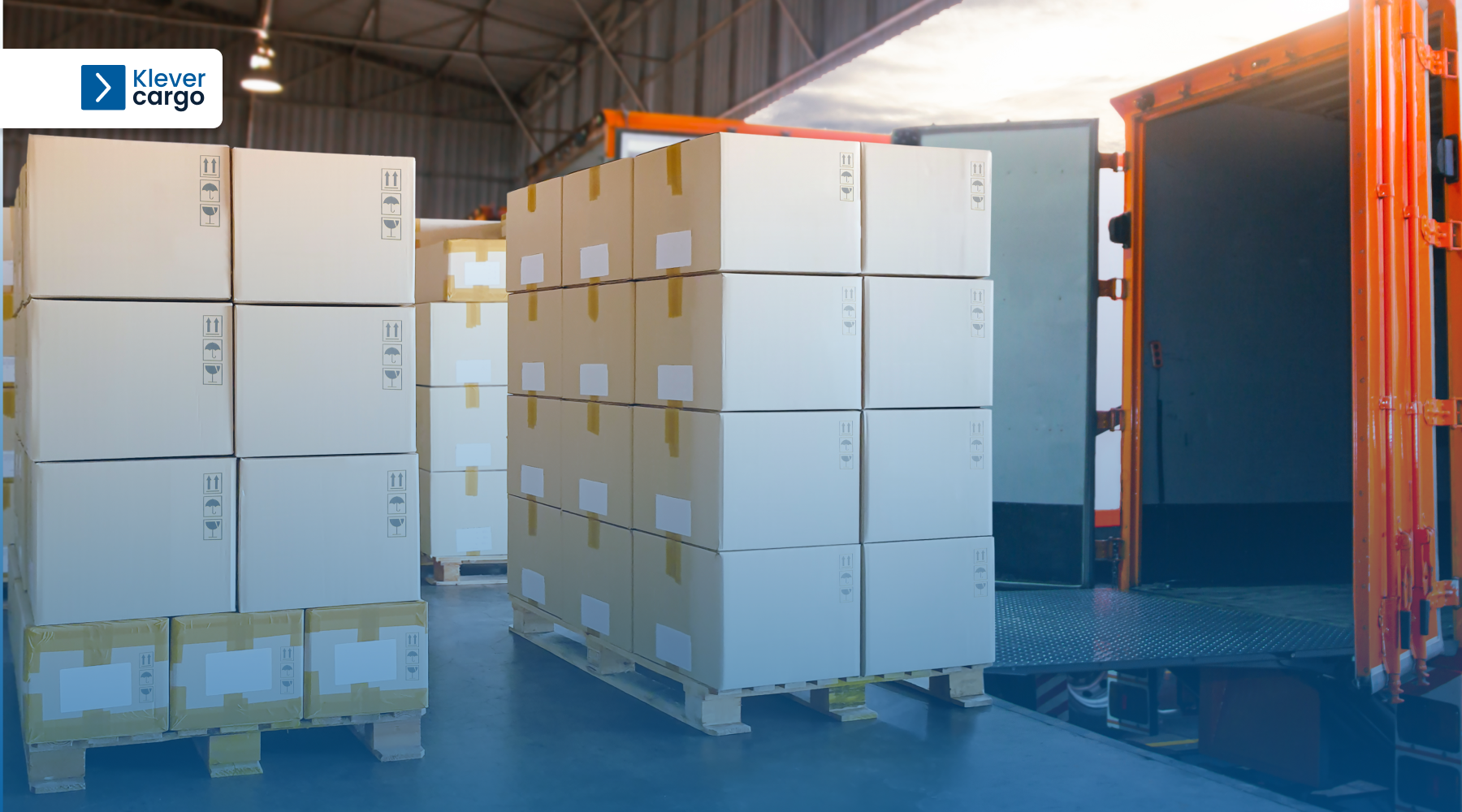
In the world of road transportation, packaging holds the key to safe and successful journeys. Every step matters, from picking suitable materials to clear communication and smart securing.
That’s where KleverCargo steps in. With its smart solutions and tailored carrier matching, your freight is in safe hands. Register with KleverCargo to ensure your goods travel securely, making road transportation a smooth and reliable experience.
